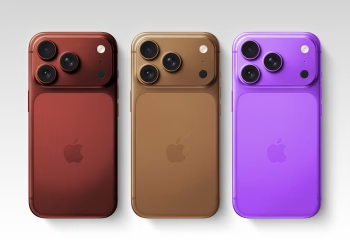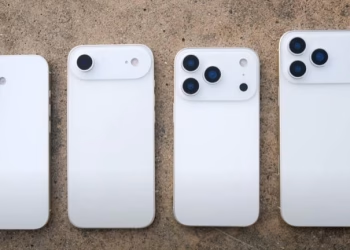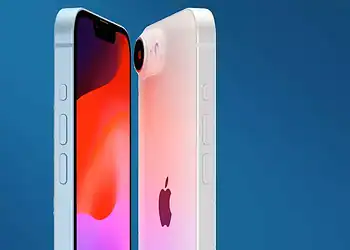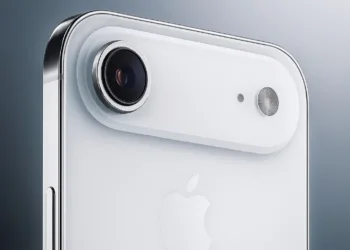Apple fans, get ready for a sleeker iPhone! According to a recent leak from Weibo-based insider Digital Chat Station, the upcoming iPhone 17 Pro Max will feature a smaller Dynamic Island, thanks to advanced Face ID technology.
Table of Contents
The Evolution of Dynamic Island
The Dynamic Island was first introduced with the iPhone 14 Pro series as a way to replace the traditional notch with a more interactive and functional space. Since then, Apple has continuously refined the feature, integrating more software enhancements to make it a core part of the iOS experience. Now, with the iPhone 17 Pro Max, we could see one of the biggest design changes yet—a smaller, less intrusive Dynamic Island.
What’s Changing?
The key upgrade lies in metalens technology, which integrates Face ID’s transmitter and receiver into a more compact form. Unlike traditional curved lenses, metalens is an ultra-thin, flat lens with microscopic nano-structures that precisely control and focus light. This innovation will reportedly shrink the size of the Dynamic Island, making way for a more immersive display.

What is Metalens Technology?
Metalens technology is a revolutionary advancement in optics, replacing the conventional lens system with a single, ultra-thin lens composed of nano-structured materials. Unlike traditional lenses that rely on curvature to bend light, metalens uses microscopic structures to manipulate light at a nanoscopic level. This enables a dramatic reduction in lens size while maintaining high-quality image and sensor performance.
Metalens technology has been under development for years, with applications ranging from AR/VR headsets to high-end smartphone cameras. Apple’s adoption of metalens for Face ID signals a major step toward more compact and efficient optical systems.
Beyond the iPhone: A Wider Apple Adoption?
The leaker also hints that this cutting-edge technology will extend to the next iPad Pro and even a rumored foldable iPad, signaling Apple’s push for thinner and more efficient designs across its device lineup. If true, this could pave the way for more streamlined devices with improved biometric authentication and a better screen-to-body ratio.
Foldable iPad: A Game-Changer?
Rumors about a foldable iPad have been circulating for years, but with advances in display and lens technology, Apple might finally be gearing up to introduce its first foldable device. A foldable iPad could feature:
- A larger, flexible display that folds seamlessly for portability.
- Advanced hinge technology that minimizes creases and enhances durability.
- Metalens Face ID integration for secure authentication in both folded and unfolded states.
- Enhanced multitasking capabilities, making it ideal for professionals and creatives.
If Apple incorporates metalens technology into this rumored device, it could mark the beginning of a new era in foldable computing.
Conflicting Reports: Who’s Right?
This claim challenges a January 2025 report by renowned Apple analyst Ming-Chi Kuo, who suggested no major size reduction for the Dynamic Island in the iPhone 17 series. However, analyst Jeff Pu has consistently predicted the opposite, maintaining that the iPhone 17 Pro Max will feature a significantly smaller Dynamic Island due to metalens integration.
This back-and-forth between analysts is nothing new in the Apple rumor mill. Historically, both Kuo and Pu have provided accurate insights, but as Apple continues to refine its design and engineering processes, last-minute changes can always occur. For now, it remains a wait-and-see situation until more concrete evidence emerges.
What This Means for Users
If true, the iPhone 17 Pro Max could offer a more immersive screen experience with less intrusive notches. A smaller Dynamic Island might also signal refinements in Face ID performance and front-camera capabilities. Here are some potential benefits:
- More Screen Real Estate – A smaller Dynamic Island means less screen obstruction, providing a more seamless viewing experience.
- Improved Face ID Speed and Accuracy – With metalens technology, Face ID sensors could become faster and more precise, reducing unlock times.
- Thinner and Lighter Design – By reducing the size of internal components, Apple could make the iPhone 17 Pro Max even thinner and lighter.
- Better Camera Performance – A smaller notch could indicate improved front-facing camera capabilities, benefiting video calls and selfies.
The Bigger Picture: Apple’s Long-Term Vision
Apple has always been at the forefront of innovation, and the introduction of metalens technology aligns with its long-term strategy of creating sleeker, more powerful devices. Some experts believe this could be a stepping stone toward a completely portless and buttonless iPhone, where Face ID and under-display sensors replace traditional components.
Possible Future Innovations
- Under-Display Face ID and Cameras – By 2026, Apple may integrate Face ID directly beneath the display, eliminating the need for a notch entirely.
- Holographic Displays – Some patents suggest that Apple is exploring holographic display technology, which could be the next evolution in screen innovation.
- More AI-Powered Features – With Apple investing heavily in AI, future iPhones may leverage machine learning for even smarter facial recognition and personalization.
Final Thoughts
With conflicting reports circulating, only time will tell which analyst is correct. But if Apple indeed adopts metalens technology, it could set the stage for a new era of sleeker, more futuristic iPhones. The iPhone 17 Pro Max might just be the beginning of a radical design shift that will shape Apple’s future devices.








